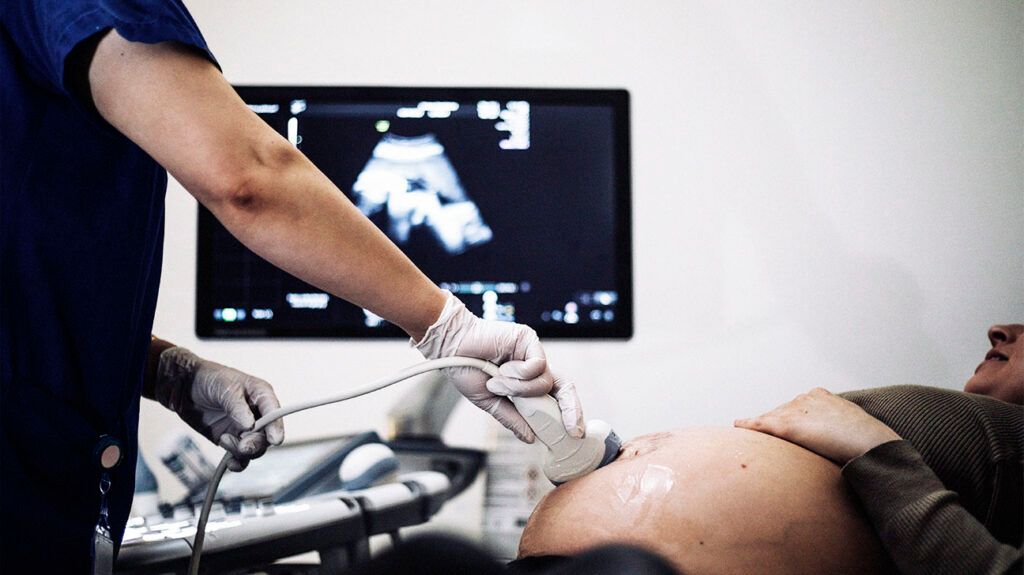Anencephaly occurs when an infant is born without parts of their brain and skull. It is a severe congenital anomaly, which means that a baby develops anencephaly in the womb.
Anencephaly is a condition known as a neural tube defect (NTD). This refers to problems with the developing brain and spinal cord. No treatment is currently available, and the direct causes of anencephaly are unclear.
The neural tube is part of a developing fetus. It grows to become the brain, skull, spinal cord, and backbone. The upper part of the neural tube is what eventually develops into the brain and skull. However, in infants with anencephaly, this does not close all the way.
This article explains anencephaly in more detail. It looks at possible causes, how to recognize symptoms, and ways to prevent the condition.
Content warning
This article includes content that some readers may find upsetting. Please read at your own discretion.

Doctors do not know what disrupts the closing of the neural tube. Changes in the developing infant’s genes may contribute to anencephaly. Low levels of folate, or vitamin B9, in a fetus may be linked to NTDs.
Specific risk factors that may contribute to anencephaly
- Excess vitamin A: One suspected factor might be excess vitamin A during pregnancy. In a study on pregnant rats, this prevented the neural tube from closing, leading to anencephaly and other NTDs. However, human studies are necessary to confirm this as a risk factor.
- Certain medications: Using certain medications during pregnancy may increase the risk of anencephaly. Anti-epileptic medications may affect a person’s ability to absorb folate. These can include valproate, carbamazepine, and phenytoin. Aspirin, certain antimalarial drugs, and diuretics may also reduce folic acid absorption, affecting an infant’s neural tube development.
- Diabetes: This condition can lead to constantly raised blood sugar in the pregnant person. Increased blood sugar during pregnancy can affect the development of organs in the embryo.
- Hyperthermia: Excessively raised body temperatures in the pregnant person may also disrupt the closing of the neural tube during development.
Researchers do not yet know enough about these factors to set guidelines or advise on restrictions.
The risk of anencephaly for those who have a medical history of infants with the condition ranges from 2–10%. This is according to a
If a person has had one child with anencephaly and is pregnant or considering another, they should contact a doctor for advice.
At birth, a baby with anencephaly is missing parts of their brain and skull. In particular, the
An infant with anencephaly
Almost every baby with anencephaly dies within days or is stillborn. According to the Fetal Health Foundation, around 10% of infants with anencephaly live for up to a week.
Anencephaly is immediately visible at birth. Doctors will identify anencephaly using the following features:
- the absence of a skull
- a tissue mass that does not have bone or skin covering it
- missing cerebral hemispheres
It is
Doctors can identify anencephaly during pregnancy.
Brain and skull anomalies linked to anencephaly will show on an ultrasound during pregnancy, usually by
A doctor may also test the pregnant person’s blood for a protein called alpha-fetoprotein. Levels of this protein increase during a healthy pregnancy. However, with anencephaly, alpha-fetoprotein levels will be significantly higher than normal in both the pregnant person and in the amniotic fluid. The amniotic fluid is what surrounds the fetus in the womb.
Amniocentesis may also help. This is a test that allows doctors to check for genetic anomalies. It involves drawing amniotic fluid with a needle and testing it for chromosomes.
There is no way to treat anencephaly. It is not possible to live for long without a cerebellum.
The longest living child with anencephaly on record who did not need life-sustaining treatment was 28 months of age at her time of death. This is according to a
It is sometimes possible to reduce the risk of anencephaly.
Having enough folic acid in the diet can prevent folate deficiency in the pregnant person and the fetus. This can help to reduce the risk of NTDs. According to the Centers for Disease Control and Prevention (CDC), NTDs have
A person who expects to become pregnant or suspects they may be pregnant can increase their intake of folic acid. They can also take prenatal vitamin supplements containing folic acid. However, it is important for people to consult their doctor for advice before taking new vitamins or supplements.
Foods high in folic acid include:
- broccoli
- Brussels sprouts
- chickpeas
- fortified breakfast cereals
- kidney beans
- leafy green vegetables, such as kale and spinach
- peas
Liver is also high in folic acid. However, it is not safe to consume during pregnancy due to high levels of vitamin A.
It is best to contact a doctor before making any significant dietary changes.
Learn more about folic acid and pregnancy.
The CDC estimates that
According to the Fetal Health Foundation, around half of all babies with neural tube defects (NTDs) have anencephaly. There are around
Anencephaly is a fatal neural tube defect. It causes babies to develop without parts of their brain and spinal cord. The cause is not clear, but genetics, diet, medications, and underlying conditions may play a role. There is no treatment.
Doctors may be able to diagnose anencephaly during pregnancy by using ultrasound, blood tests, and amniocentesis.
It may be possible to prevent anencephaly and other neural tube defects. Taking folic acid supplements or eating a diet rich in folic acid may help. A person’s doctor can provide them with more advice on ways to reduce the risk of anencephaly.
